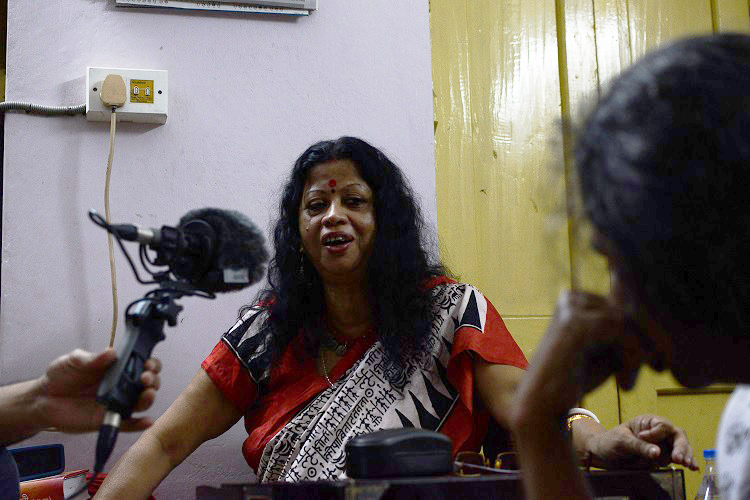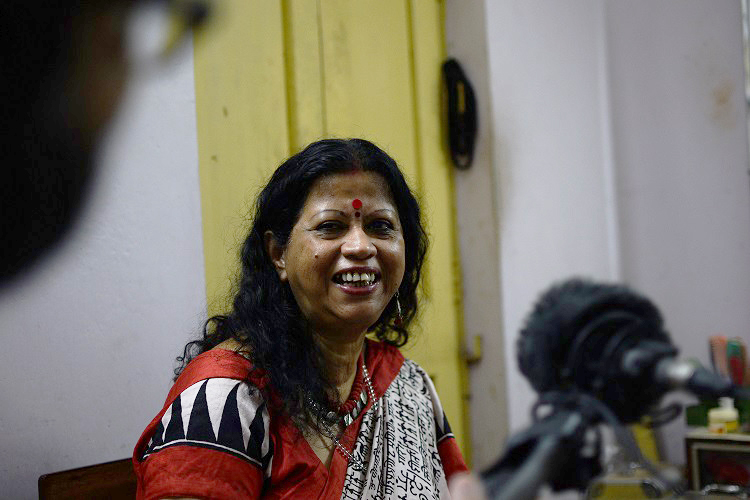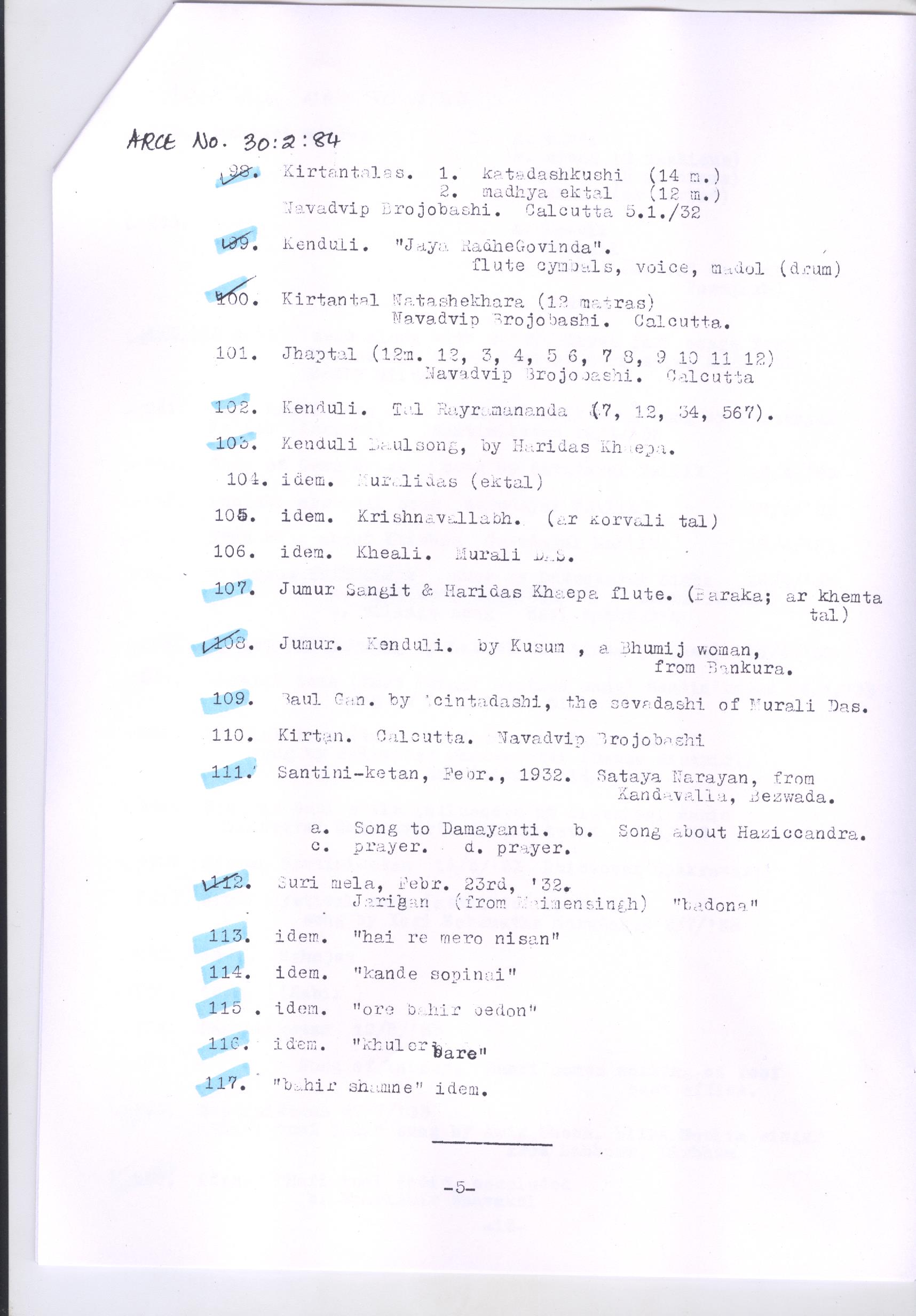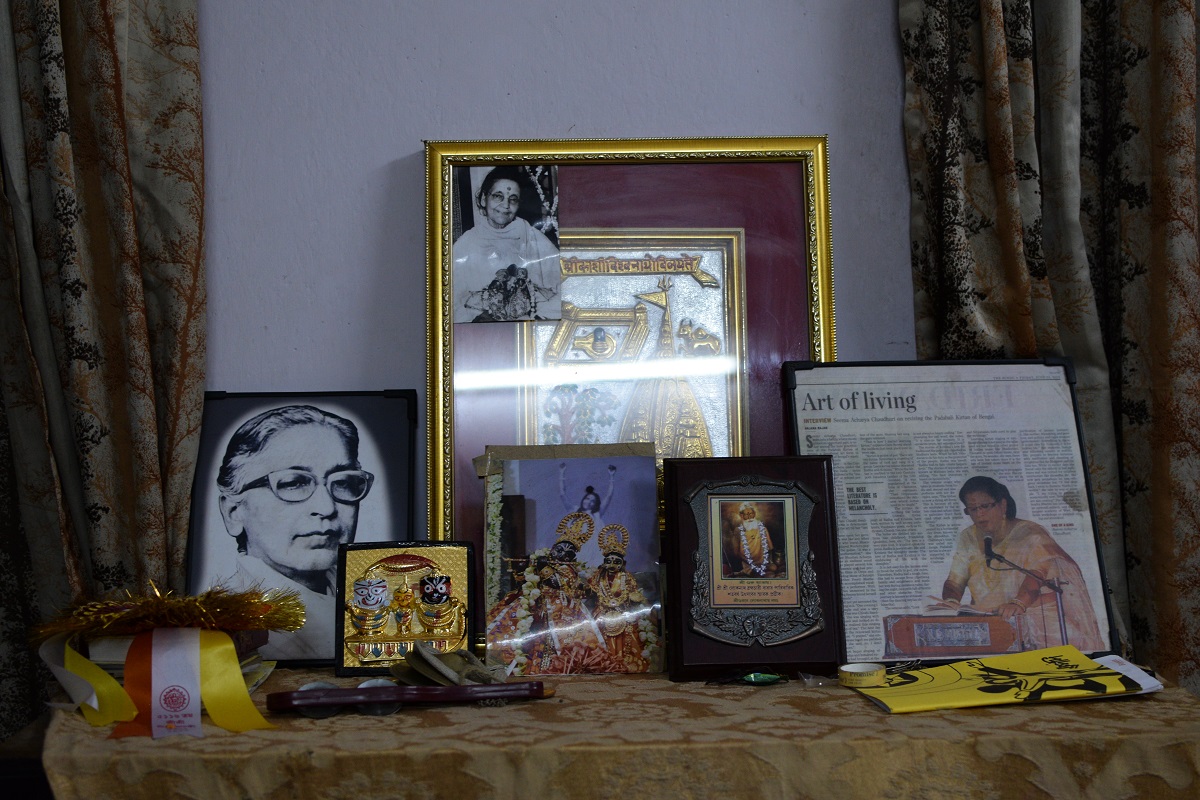
Kirtaniya Seema Acharya Listens to Olly
Slowly the sessions are moving towards listening to listening, layering recording upon recording. Now the tapestry has started to form. Seema Acharya is a renowned singer of kirtan and we went to her home in south Kolkata; we meaning sound recordist Sukanta Majumdar, I and Jan-Sijmen Zwarts, who has come from Utrecht to stay with me and help me read Arnold Bake’s letters. He took all the photos of the day. There were many with all the sweets and goodies we were treated to, which J-S’s lens especially saw, which I am not including here, although story goes that the older Dutchman whose footsteps he was following was also attracted to Bengali food.
On 8 February 2016, I took the recordings Olly had sent from London, singing Arnold Bake’s notation of kirtan to Seemadi, to see what she made of them.
A vibrant personality and of course a very fine and equally knowledgeable singer, Seema Acharya enriched us with songs and stories. She broke into song as she heard Olly play and sing, filling in with details about kirtan, endorsing Arnold Bake’s notation; thus endorsing Bake’s listening and interpretation. Our recordings of the day were made by Sukanta Majumdar.


Seemadi knows these melodies, she recognises them as being of the style of kirtan she has been trained in.
After the Nam Sankirtan played in Rag Pilu and Sindhu Bhairav, we come to ‘Esho duti bhai Gouro Nitai’ and before we can even start Olly’s song, Seema Acharya starts to play the harmonium and sing. She explains that this is the ‘adhibash kirtan’, a song about friendship and love, and without these true devotees, Gour and Nitai, no celebration of the divinity of Krishna and Radha is ever complete. When Olly’s song starts, Seemadi is amazed that what he is singing is so similar to her song. We come from the same school after all, she says. What she means is, Bake was taught by Navadvip Brojobashi and her guru Chhabi Bandopadhyay was also taught by him.

Here is a Brojobashi recording of Arnold Bake, which we got from the Archives and Research Centre for Ethnomusicology (ARCE) in Gurgaon. First, ARCE’s archivist then, poet and sonic archaeologist, Uma Shankar Manthravadi makes an announcement for the recordings he sent for our website in 2010.
The comes Navadvip Brojobashi’s kirtan, recorded in Calcutta by Arnold Bake on 5 January 1932. Another recording can be heard on our Related Research page on Arnold Bake.
Seemadi talked about the far-reaching impact of kirtan, how it can touch so many hearts at the same time.
There is a short piece in Rag Behag and it sounds so Tagorean.
Seema Acharya talks about her family—her mother who sang, her father, Phani Bhushan Bhattacharya, who was from Mymensingh, from the bottom the Garo Hills, who was a natural musician and could play many, mainly string instruments.
Seemadi then sings the Mathur—songs of separation, longing and love.
She then talks about growing in a family of musicians, playing the guitar, forming a band called Green Leaves Orchestra, also singing English numbers such as the Jamaica Farewell! Then one day she listens to Chhabi Bandopadhyay and her life begins to change forever.

The shrine in Seema Acharya’s home, with her gods and her guru and a framed newspaper article about her.
- Manoharsai from Sumati Devi of Manipur
- Manipur Univisited
- In Search of Nabadwip Brojobashi
- Nirmalendu Mitra Thakur Explains Bake’s Kirtan Recordings, 2021
- Found Film: Janmashtami and Nandotsav in Mainadal, 1994
- Olly Weeks Reads Bake’s Kirtan Notation
- In Mongoldihi, November 2015
- The Niyomsheba Songs, October 2014
- First Time in Mainadal, August 2014
